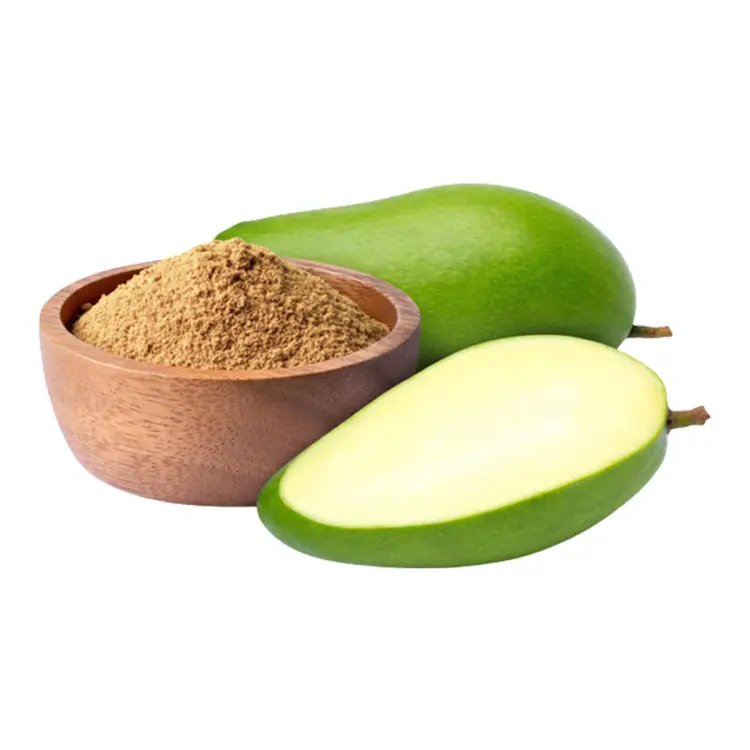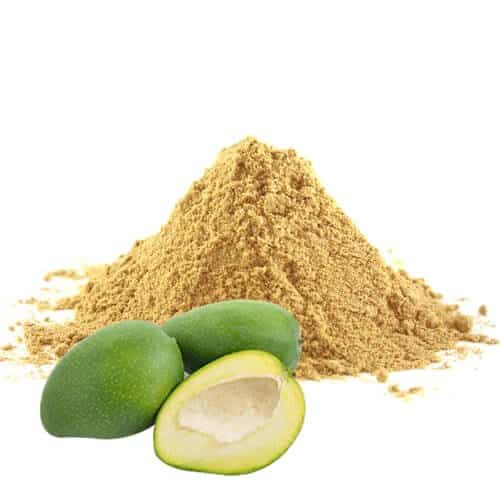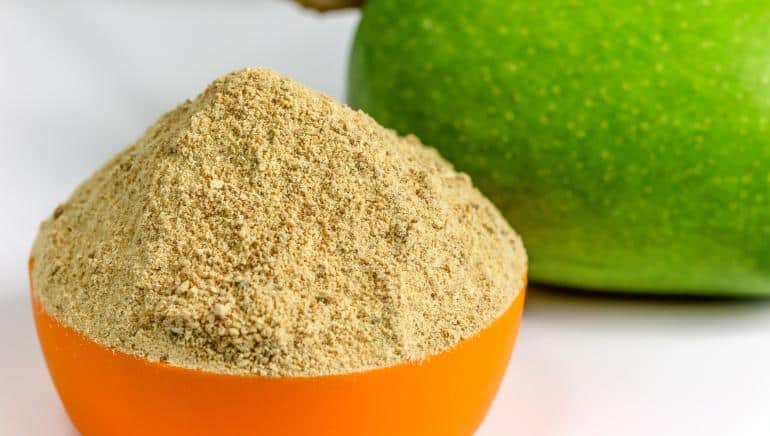Blog
Mango powder in regional Indian recipes?

Mango powder, also known as amchur, transcends its vibrant color to become a vital ingredient in the diverse culinary tapestry of India. Crafted from sun-dried or freeze-dried mangoes, amchur captures the essence of the fruit’s tangy sweetness, adding a unique depth of flavor to a vast array of regional Indian dishes. Let’s embark on a flavorful journey across India, exploring the various ways amchur enhances regional specialties.
North India: Amchur reigns supreme in the rich and flavorful curries of North India. It features prominently in “chana masala” (chickpea curry), where its tangy sweetness cuts through the richness of the tomatoes and spices, creating a perfectly balanced flavor profile. Similarly, amchur adds a touch of magic to fragrant “palak paneer” (spinach and cottage cheese curry), balancing the earthiness of spinach with its bright acidity. Beyond curries, amchur finds its way into cooling “raita” (yogurt-based condiments), chutneys, and even “sambal,” a spicy lentil dip, where its tang balances the heat of chilies. In street food stalls across North India, vendors sprinkle a touch of amchur over crispy “samosas” and “chaat” (savory snacks), adding a delightful burst of flavor.
South India: Amchur ventures south, playing a vital role in the vibrant and aromatic cuisine of the region. In South Indian curries like “sambar” (lentil stew), amchur adds a subtle tang that complements the complex blend of spices. Keralan cuisine utilizes amchur in its iconic “fish curries,” where its acidity balances the richness of coconut milk and seafood. Furthermore, amchur is a key ingredient in “aam panna,” a refreshing summer drink made with mango powder, water, sugar, and a pinch of salt. This quintessential beverage quenches thirst and offers a delightful burst of mango flavor, particularly cherished during the hot Indian summers.
West India: The vibrant cuisine of Western India welcomes amchur with open arms. In Maharashtrian cuisine, amchur features in “solkadi,” a tangy coconut milk-based drink, adding a refreshing twist to the creamy base. Similarly, Gujarati cuisine utilizes amchur in its famous “dhokla” (steamed lentil cakes), where its tang complements the savory chickpea flour base. Furthermore, amchur plays a role in “thepla,” a flatbread from Gujarat, adding a touch of acidity to the dough for a unique flavor profile.
East India: The culinary landscape of Eastern India embraces amchur with its own unique twist. In Bengali cuisine, amchur finds its way into “shorshe bata” (mustard paste) and “kasundi” (fermented mustard condiment), adding a touch of sweetness that complements the sharp mustard flavor. Odia cuisine incorporates amchur into its fragrant “dalma” (lentil stew), where its tangy sweetness balances the earthy flavors of lentils and vegetables.
Beyond Regional Boundaries: The magic of amchur extends beyond regional boundaries. It’s a staple ingredient in spice blends like “chaat masala,” a versatile blend used to add a burst of flavor to street food and various savory dishes. Additionally, amchur finds its way into pickles and chutneys across India, adding its unique tang to these flavorful condiments.
A Final Note: Amchur offers more than just a burst of flavor. Its natural acidity acts as a tenderizer in marinades for meats and poultry, and its thickening properties make it a valuable addition to sauces and dips. Furthermore, amchur can be used as a partial sugar substitute in certain recipes, offering a healthier alternative without compromising taste.
In conclusion, mango powder, or amchur, is not merely an ingredient in Indian cuisine; it’s a flavor whisperer, weaving its magic across regions and dishes. From the rich curries of the North to the refreshing beverages of the South, amchur adds a unique depth of flavor that truly elevates the culinary tapestry of India. So, the next time you explore Indian cuisine, keep an eye out for the vibrant color of amchur, and prepare to be delighted by its tangy magic.
Related Blogs:
What is mango powder used for in cooking?
What is the cultural significance of mango?
FAQ:
- What is mango powder called in India?
Mango powder is called “amchur” in India.
- How is amchur used in North Indian cuisine?
Amchur adds a tangy sweetness to curries like chana masala and palak paneer, balances flavors in raita and chutneys, and offers a flavor twist to street food like samosas and chaat.
- What role does amchur play in South Indian cuisine?
In South India, amchur adds a subtle tang to sambar and complements the richness of coconut milk and seafood in fish curries. It’s also a key ingredient in the refreshing summer drink, aam panna.
- How is amchur used in West Indian cuisine?
Maharashtrian solkadi gets a tangy twist with amchur, while Gujarati dhokla and thepla benefit from its touch of acidity in the dough and batter.
- Does amchur have a place in East Indian cuisine?
Yes! Bengali shorshe bata and kasundi get a touch of sweetness from amchur, and Odia dalma enjoys a flavor balance with its addition.
- Is amchur used in spice blends?
Absolutely! Amchur is a staple ingredient in chaat masala, a versatile blend used to add a burst of flavor to street food and various savory dishes.
- What are some additional uses of amchur beyond flavoring?
Amchur’s natural acidity works as a meat tenderizer in marinades, and its thickening properties make it valuable in sauces and dips. It can even be used as a partial sugar substitute in certain recipes.
- Where else can I find amchur in Indian cuisine?
Look for amchur in pickles and chutneys across India, where it adds its unique tang to these flavorful condiments.
- Is there a specific type of mango used for amchur?
While various mango varieties can be used, unripe mangoes with a higher acidity are generally preferred for amchur production.
- How can I find amchur if I don’t have an Indian grocery store nearby?
Look for the international section of larger supermarkets or online retailers specializing in international ingredients. You might find it labeled as “mango powder” or “amchur powder.”





2 thoughts on “Mango powder in regional Indian recipes?”